How To Add Feedback To Ac Motor
An Air-conditioning motor is not working like it's supposed to. What do you practice? Before replacing the motor, here are 3 ways to start troubleshooting your AC motor with a circuit tester. AC motors are the easiest type of motors to utilize. Once power is connected, an Air-conditioning motor runs at a sure speed, and stops when the power is disconnected. When an Air conditioning motor does not work, it's usually a power or wiring event. The trick to identifying the cause is to isolate potential problems. What is a Excursion Tester? Start, Cheque the Bones Wiring. When the motor is wired to a power supply but not working, the first thing yous should do is check the wiring and confirm the required components for operation are in good working status. Since there could be many components in the power supply circuit that tin can touch motor operation, such as relays, switches, or controllers, start with the most basic circuit as possible. This ways connecting the AC motor and capacitor directly to the AC ability supply. Once yous confirm that the motor works, and then you can add back the components back. This can assistance you verify if the components are skilful or bad. TIP: Many Ac motor issues are caused past bad components or incorrect wiring. To make troubleshooting easier, isolate the problem by troubleshooting the most basic circuit showtime. Once that has been confirmed, and so test each individual component every bit they're added back into the circuit. 3 Things to Test with a Excursion Tester Here are iii means to help find the cause of an AC motor problem. 1. Compare the applied voltage with the capacitor's last voltage. Now nosotros will bear witness you how to practice each measurement, and what it confirms. TEST 1: Compare Applied Voltage with Capacitor Terminal Voltage If properly connected, the capacitor terminal voltage should be roughly 1.7 times the value of the ability supply voltage. This confirms if the motor is receiving the proper voltage. Using Excursion Tester A every bit shown in the above diagram, connect the red needle tip to the exposed portion of the red wire, and connect the black needle tip to the exposed portion of the black wire (and brand sure in that location is proficient contact). Ostend that the proper voltage is received at the motor. Select AC voltage measurement mode (indicated by a "V"), on the circuit tester before starting. If correctly connected, Circuit Tester A volition show the power supply voltage. For easy calculation, we used a 100 VAC motor in the example, so 100 V would display on the excursion tester. Using Circuit Tester B as shown in the above diagram, connect the reddish needle tip to the exposed portion of the red wire, and connect the black needle tip to the exposed portion of the white wire. If properly connected, the circuit tester volition show a value that'southward nearly one.7 times the power supply voltage. In this case, 170 V is measured. Compare the two measured voltages. The capacitor terminal voltage (red/white) should be 1.7 times more than of the power supply voltage (black/red). What If I Don't Have a Circuit Tester / Multimeter? To cheque whether whatever capacitor is connected in the circuit, rotate the motor shaft manually by manus while the power is on. If no capacitor is connected, it volition rotate in the direction in which you apply the force. TEST 2: Verify if Electricity is Conducted Throughout the Cable A pause in the connection of the motor's circuit with its power supply tin can prevent the motor from working properly. Doing the post-obit measurement can ostend if a circuit is closed or open. Do this with the ability off. Using Circuit Tester C and D as shown in the above diagram to test the continuity of the cables from the motor to the power supply. Use the black and scarlet needle tips from the circuit tester to connect to the exposed connection points closest to the motor to the power supply. If there'southward no break in the excursion, the circuit tester will beep. TEST 3: Verify Motor Winding Resistance By measuring the motor's winding resistance and comparing the values to the motor's original designed values, the electrical condition of a motor can be verified. Before measuring, remove all boosted components, such as extension cables and capacitor, from the circuit. Switch the circuit tester to resistance value measurement mode. Using Circuit Tester East and F in the above diagram, connect to the exposed portions of the lead wires directly from the motor. We are over again using a 100 V motor as an example (model: 2IK6A-JA). For this item motor, the resistance readings from both Circuit Tester Eastward and F should be 170 ohms. If the winding is broken, the excursion tester will read a value of over several chiliad ohms. If in that location's an internal short excursion, a value smaller than 170 ohms. For other motors, delight contact the motor manufacturer to see what the designed values are supposed to be. There is a tolerance of nigh +/-10% for winding resistance. What Do I Do If My Motor Does Not Laissez passer These Tests? When a motor doesn't piece of work, information technology could be a bad motor, or but a bad component making the motor expect bad. Examples are bad switches, relays, cables, or just the wrong voltage. Doing these tests would provide valuable hints on what to set up. These are examples. If your motor doesn't pass Examination 1, check/supplant the capacitor or wiring. If your motor doesn't pass Test two, check/supercede the cable or connector. If your motor doesn't pass Test 3, replace the motor. Mechanical issues, such as a damaged ball bearing due to excessive radial or axial loads, tin can as well terminate the functioning of a motor. To test this, remove the motor and gearhead and endeavor to rotate the shaft in both directions. If the motor shaft or the gearhead shaft feels locked up without whatever load, so something is not right. An abnormal noise or friction while turning the shaft could indicate damage or misalignment. The best thing to exercise would be to supplant the motor and/or gearhead. Some other mode to go a better motor troubleshooter is to sympathise the product better. Take a look at these related posts to increase your product noesis of AC motors (or talk to our technical support engineers).
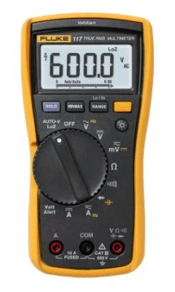
A circuit tester (also known as a multimeter or multitester), is an electronic measuring musical instrument that combines functions from a voltage meter, an ohmeter, and an ammeter. A typical circuit tester can measure voltage, resistance, and current in a circuit. 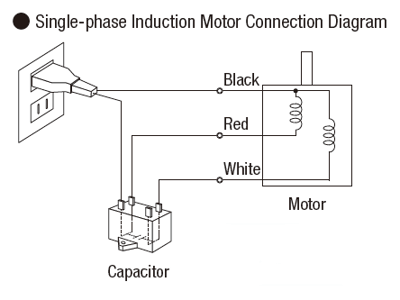
2. Verify if electricity is existence conducted through the extension cable.
3. Verify motor winding resistance. 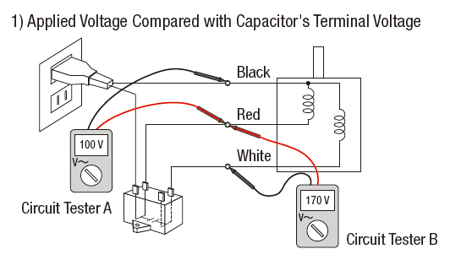

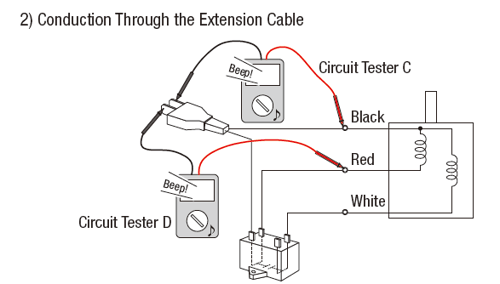
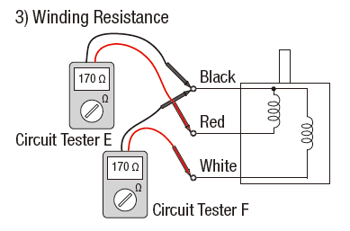

Topics: AC Motors, Troubleshooting

Written by
Johann Tang is a Product Specialist at Oriental Motor USA Corp. with over fifteen years of knowledge and experience supporting applications of diverse types of electrical motors, gearheads, actuators, drivers, and controllers.
How To Add Feedback To Ac Motor,
Source: https://blog.orientalmotor.com/3-ways-to-troubleshoot-ac-motors-with-a-circuit-tester
Posted by: wardposs1950.blogspot.com


0 Response to "How To Add Feedback To Ac Motor"
Post a Comment